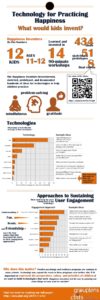This year, I took part in the comments workshop at CSCW 2017 (also known as the CCCCCCCR Workshop). The workshop applied a model I appreciate — we actually attempted to get some real work done during our time. As part of a great work group with Stuart Geiger and Tom Wilson, we dove into understanding how subreddit members reason about the decision to disable the downvoting feature.
First, a little background. By default, Reddit provides the readers with the option to give both positive (upvote) and negative (downvote) feedback on any post. However, the moderators of a particular subreddit may choose to disable this option through a simple hack of the interface (technically the option is still there, but it is invisible in the standard interface). Below is an screencap of two example subreddits, demonstrating the difference:

Two subreddits. On the left, the r/YAwriters does not make the downvoting option available. On the right, r/dailyprogrammer does.
Subreddits that decide to disable or enable the downvoting feature generally post about this decision, allowing members of the community to weigh in. In this post, I’ll focus on our qualitative analysis of these of these discussions. To broadly sketch out our method:
- We began with a master Reddit dataset (helpfully provided for the workshop by Alex Leavitt and available publicly on Google BigQuery) and searched for four variations of the phrase “disabled downvoting.” Through this process, we identified 13 potential subreddits that have posted on this topic.
- From this set, we excluded subreddits where the option was mentioned but not discussed or enacted, ending up with 4 subreddits that made the decision to disable downvotes and were still disabled on the day of the workshop (Feb 2017) and 4 subreddits that made the decision to disable downvotes but reversed this decision sometime before the workshop.
- We open-coded all discussion in the post threads corresponding with the decision to disable and/or re-enable downvoting (generating over 150 open codes).
- We clustered these open-codes based on thematic affinity to identify major themes in response to the three guiding questions below.
Q1: Why do communities consider disabling the downvote? In our data, we observed four major reasons for this decision. First, if the community was small, they cited the ability and desire to self-moderate without the downvote. Second, subreddit members worried that downvotes introduced negativity, which was seen as particularly problematic in communities that encouraged creative contribution and growth (e.g., see r/YAwriters above). Third, communities may have perceived downvotes to be misused to mark differences of opinion (e.g., disliking a particular music genre) or personal disagreements rather than to signify irrelevant content. Finally, some cited that in very active communities certain reader “blanket downvote,” leading to new posts disappearing from the front page without ever being seen.
Q2: What are some objections to disabling the downvote? Despite the reasons given above to consider disabling downvoting, the decision was met with disapproving voices in some communities. The dissenters cited one or more of three main reasons. First, downvotes were seen as an important part of how a subreddit shapes itself and removing this option was seen as “not in the spirit of reddit.” Second, in certain communities, the move to disable downvotes was denounced as problematic pandering to the need for “safe spaces.” Finally, members worried that disabling downvoting removed a useful mechanism for the community to mark spam, irrelevant, and false posts.
Q3: Why did some communities choose to reverse their decision to disable downvotes? Four of the subreddits we examined chose to re-enable downvotes (one of these just 10 hours after the initial decision). We examined the three major reasons cited in those discussions. The first reason cited was that disabling was meant as a temporary change (e.g., after an influx of new members) or as a tentative experiment. Thus, the return to enabling downvotes was expected and unsurprising. The second reason cited was that the interface hack for disabling the downvote was insufficient. Since there were still ways to trigger a downvote without the graphical down arrows (e.g., keyboard shortcuts, mobile interface), the intervention may have disproportionately affected different groups of readers. The third reason cited was that a different solution to the consideration highlighted in Q1 was necessary due to the objections highlighted in Q2. One such solution was to set and make visually salient a set of rules for how a downvote is meant to be applied in that particular community (e.g., to mark irrelevant content but not to signify personal opinion).
There were also a few interesting implications for future research and design that emerged from this qualitative analysis. First, we found that users suggested a number of desired features and alternatives to downvoting that were simply not possible within the constraints of the current Reddit system. At the core of most of these suggestions, members of these communities desired a way to share their values with readers and encourage readers to apply the downvote or upvote with those values in mind. Second, we found that users had diverse hypotheses about predicted future effects of disabling downvoting with opposing theories regarding possible effects on increasing/decreasing the amount of discussion, increasing/decreasing posted content quality, and increasing/decreasing other participation (e.g., upvotes). Given the diversity of these folk theories, it seems that these questions are ripe for empirical investigation.

